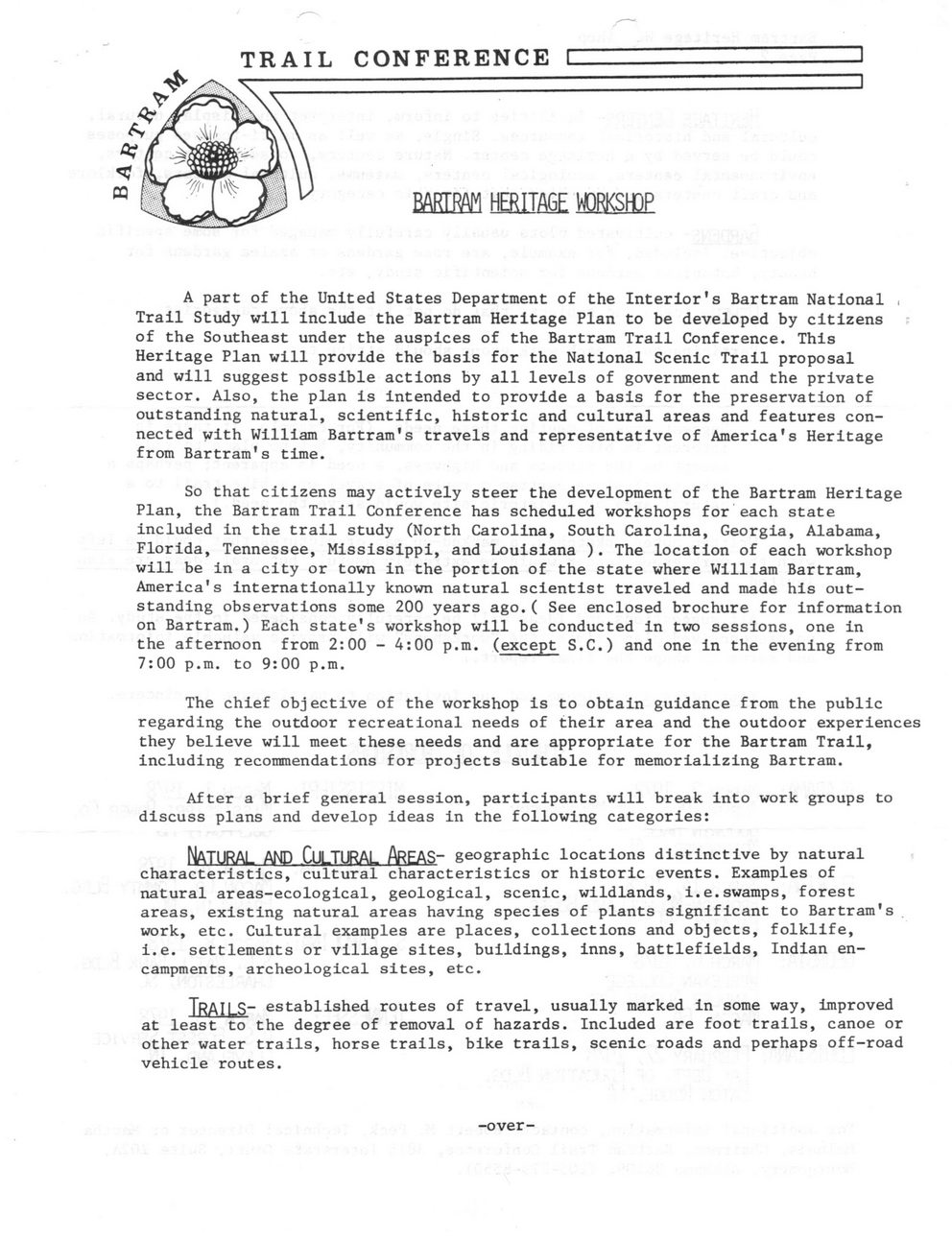This text was obtained via automated optical character recognition.
It has not been edited and may therefore contain several errors.
TRAIL CONFERENCE C A part of the United States Department of the Interior's Bartram National , Trail Study will include the Bartram Heritage Plan to be developed by citizens : of the Southeast under the auspices of the Bartram Trail Conference. This Heritage Plan will provide the basis for the National Scenic Trail proposal and will suggest possible actions by all levels of government and the private sector. Also, the plan is intended to provide a basis for the preservation of outstanding natural, scientific, historic and cultural areas and features connected with William Bartram's travels and representative of America's Heritage from Bartram's time. So that citizens may actively steer the development of the Bartram Heritage Plan, the Bartram Trail Conference has scheduled workshops for each state included in the trail study (North Carolina, South Carolina, Georgia, Alabama, Florida, Tennessee, Mississippi, and Louisiana ). The location of each workshop will be in a city or town in the portion of the state where William Bartram, America's internationally known natural scientist traveled and made his outstanding observations some 200 years ago.( See enclosed brochure for information on Bartram.) Each state's workshop will be conducted in two sessions, one in the afternoon from 2:00 - 4:00 p.m. (except S.C.) and one in the evening from 7:00 p.m. to 9:00 p.m. The chief objective of the workshop is to obtain guidance from the public regarding the outdoor recreational needs of their area and the outdoor experiences they believe will meet these needs and are appropriate for the Bartram Trail, including recommendations for projects suitable for memorializing Bartram. After a brief general session, participants will break into work groups to discuss plans and develop ideas in the following categories: NATURAL AND CULTURAL Areas- geographic locations distinctive by natural characteristics, cultural characteristics or historic events. Examples of natural areas-ecological, geological, scenic, wildlands, i.e.swamps, forest areas, existing natural areas having species of plants significant to Bartram's work, etc. Cultural examples are places, collections and objects, folklife, i.e. settlements or village sites, buildings, inns, battlefields, Indian encampments, archeological sites, etc. TRAILS- established routes of travel, usually marked in some way, improved at least to the degree of removal of hazards. Included are foot trails, canoe or other water trails, horse trails, bike trails, scenic roads and perhaps off-road vehicle routes. -over-

Bartram Heritage-Workshop-p.1